Matthew Girson’s paintings require the viewer to slow down, look closely, and listen carefully. Upon viewing his recent exhibition at the Chicago Cultural Center I was reminded of the importance of delicate uses of light and shadow. And, how these subtleties can produce a sense of silence. The COMP Magazine recently visited Girson’s Oak Park studio to discuss why the venue for his recent exhibition was an ideal setting, the intentionality of his palette, and why painting holds unique traits that cannot be reproduced in any other medium.
Lets start with your interest in books and libraries. You recently held an exhibit, “The Painter’s Other Library”, at the Chicago Cultural Center (the city’s former library). This exhibition did not appear to be something that was quickly churned out. When did you begin thinking about the project? What were some of the considerations, obstacles and pleasures you encountered as this investigation unfolded?
I made some drawings of library stacks in 2008. They informed some more drawings and some paintings. By 2009 I was only making work based on books and libraries. In 2010 I submitted some material the Cultural Center and we began talking about possibilities in 2011.
In early 2011 I had a show of book paintings and drawings at INOVA in Milwaukee. INOVA is part of the University of Wisconsin-Milwaukee and while planning the show Nicholas Frank, the exhibition curator, introduced me to some librarians and special collections curators on campus. This led to the installation of one of my library paintings in the university library at UMW. That experience got me thinking about moving my work out of traditional painting venues and the Chicago Cultural Center – with its history as the first permanent home of the Chicago Public Library – turned out to be the perfect venue. The more I researched the better the fit.
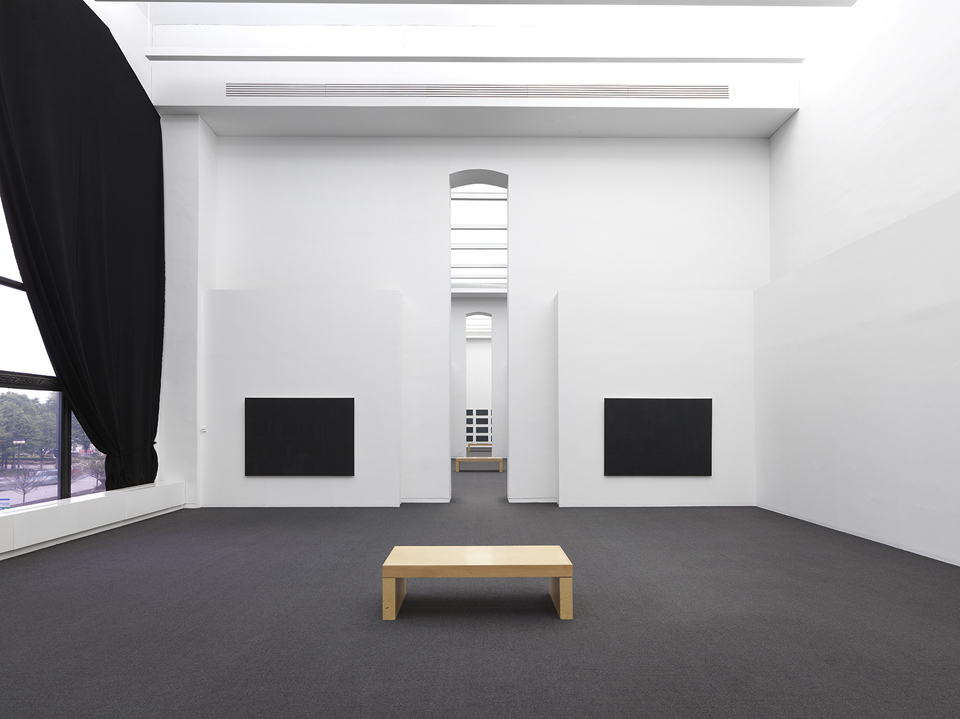
Matthew Girson, Installation View of “the Painter’s Other Library” exhibition in the Chicago Rooms at the Chicago Cultural Center, 2014. Pictured are “Fiction” (left) and “Non-Fiction” (right)
courtesy of the artist
photograph by Tom Van Eynde
Your palette is often dark and subtle, obviously intentional. Why are you drawn to this aesthetic? What is the intent?
My paintings are dark and full of color. My intent is to slow down the viewing process.
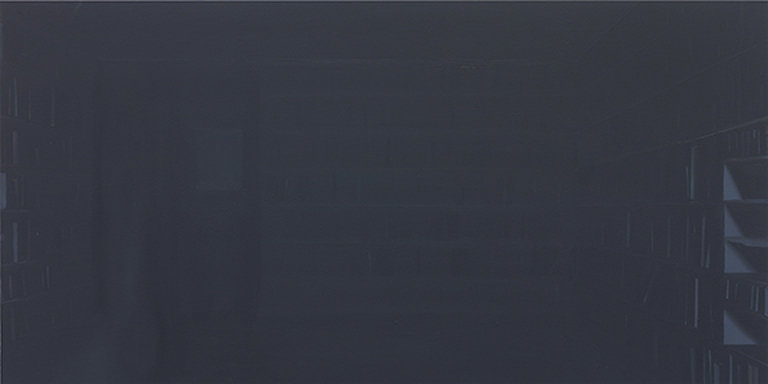
Matthew Girson, The Walls Were Full of Books, 2014, Oil on Alupanel, 16 x 32
courtesy of the artist
photograph by Tom Van Eynde
Painting is a century’s old art practice. In this digital age, some discard while others embrace. Why have you chosen to paint instead of working with a more ‘timely’ medium? What do you value in the process of painting?
The deep history of painting offers challenges that other media can’t touch. These challenges include the history of representation as well as the history of abstraction, and how they inform one another. I’m interested in the particular ways that painting engages the abstraction of representation and the representation of abstraction.
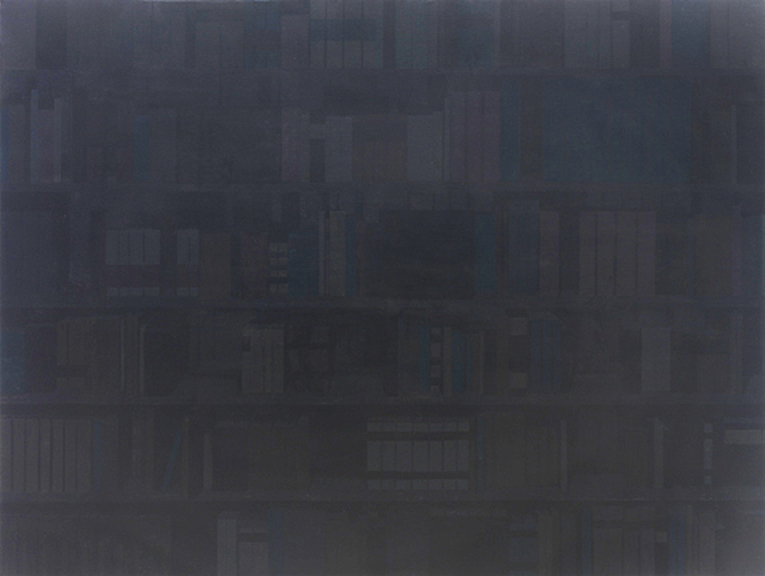
Matthew Girson, Non-Fiction, 2013, Oil on Canvas, 60 x 80”
courtesy of the artist
photograph by Tom Van Eynde
You also teach painting? What do you value in this experience? Do you see any specific changes (physical or conceptual) to the approach over your tenure?
Teaching painting is fun but does not inform my studio practice too much. I teach topic-based seminars and the subjects from these seminars mirror my research beyond painting. Themes from seminars on irony, trauma, and contemporary art find their way into my work, usually very obliquely.
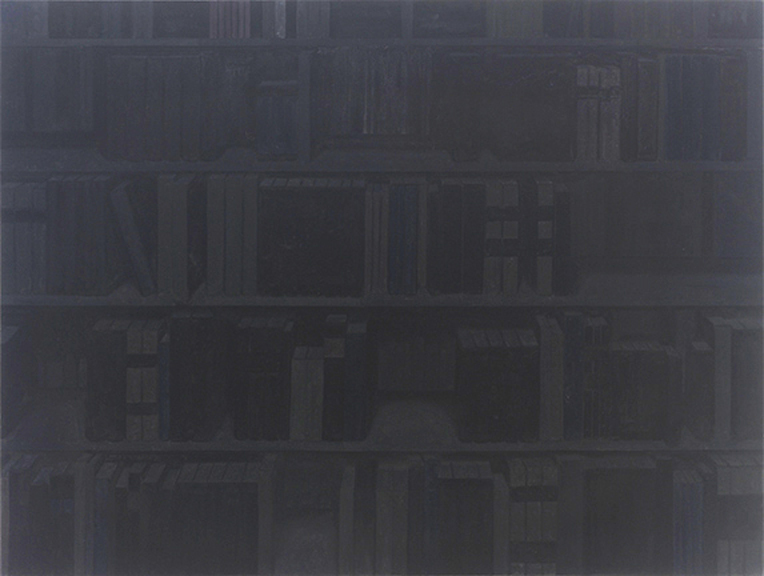
Matthew Girson, Fiction, 2012, Oil on Canvas, 60 x 80”
courtesy of the artist
photograph by Tom Van Eynde
What’s next? Are there specific tenets or investigations you plan to extend from recent efforts?
I’m working. We’ll see where it leads….

Matthew Girson, The Painter’s Other Library, 1,2,3 (2013-2014), Oil on Alupanel, 9’ x 28’
courtesy of the artist
photograph by Tom Van Eynde
Matthew Girson is an artist, writer, and Associate Professor in the Art, Media, and Design Department at DePaul University in Chicago. He has presented solo exhibitions at the Chicago Cultural Center, INOVA (Milwaukee), Mary and Leigh Block Museum, Northwestern University (Evanston), The Next Art Fair (Chicago), Sonnenschein Gallery, Lake Forest College (Lake Forest, IL), The Suburban (Oak Park), and Rowland Contemporary (Chicago).
To view additional work by Matthew Girson, please visit:
Matthew Girson: http://www.matthewgirson.com/
The Painter’s Other Library: http://www.cityofchicago.org/city/en/depts/dca/supp_info/girson.html
Bad at Sports Review: http://badatsports.com/2014/matthew-girson-seeing-slowly-in-dark-light/
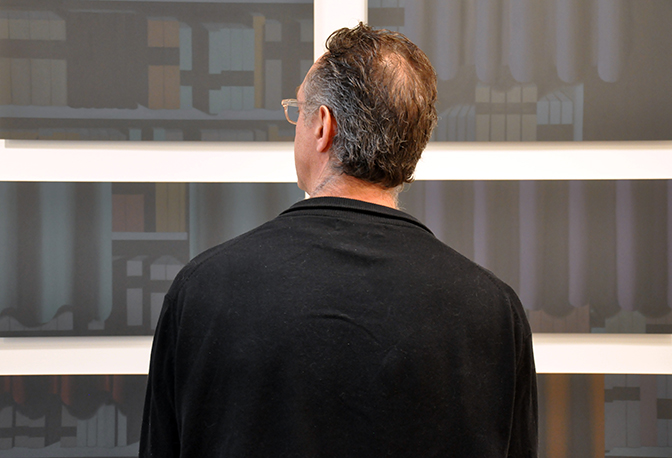
Matthew Girson, painter, Chicago, 2014
Interview and portrait by Chester Alamo-Costello


